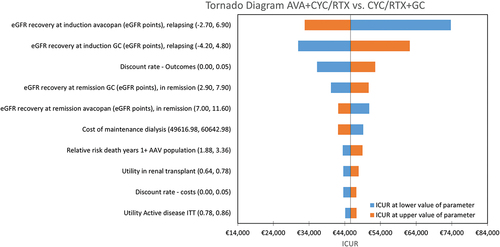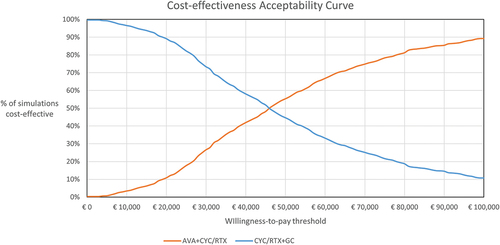Figures & data
Table 1. Baseline patient demographic and clinical characteristics. Source: Jayne et al. 2021 [Citation15].
Figure 1. Markov model for AAV.

Table 2. Costs and utilities included.
Table 3. Base case results: avacopan vs. GC arm (€ 2022).
Figure 2. Tornado diagram: avacopan vs. GC arm.

Figure 3. Cost-effectiveness plane: avacopan vs. GC arm.

Figure 4. Cost-effectiveness acceptability curve: avacopan vs. GC arm.

Table 4. Scenario analysis: progression to ESRD (€ 2022).
